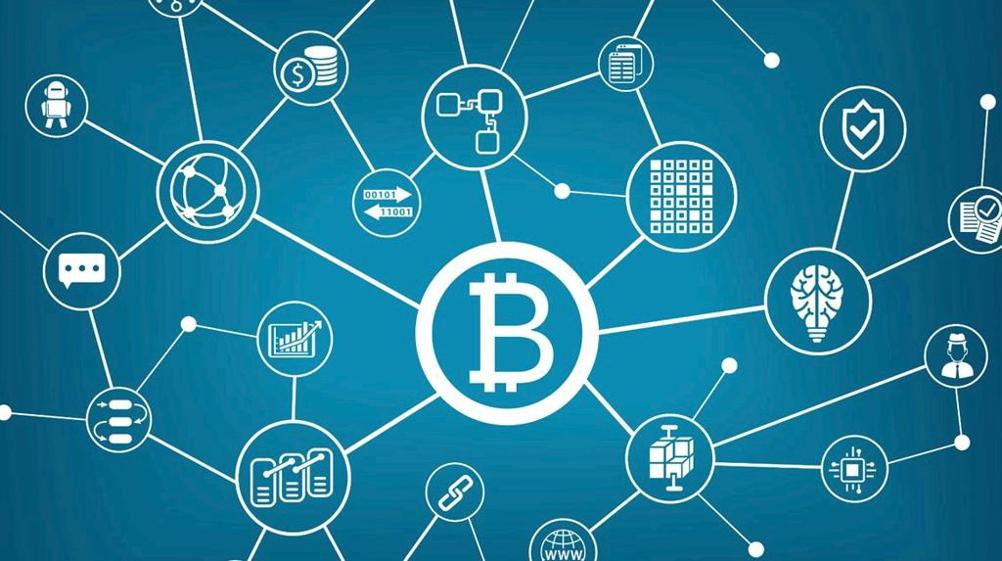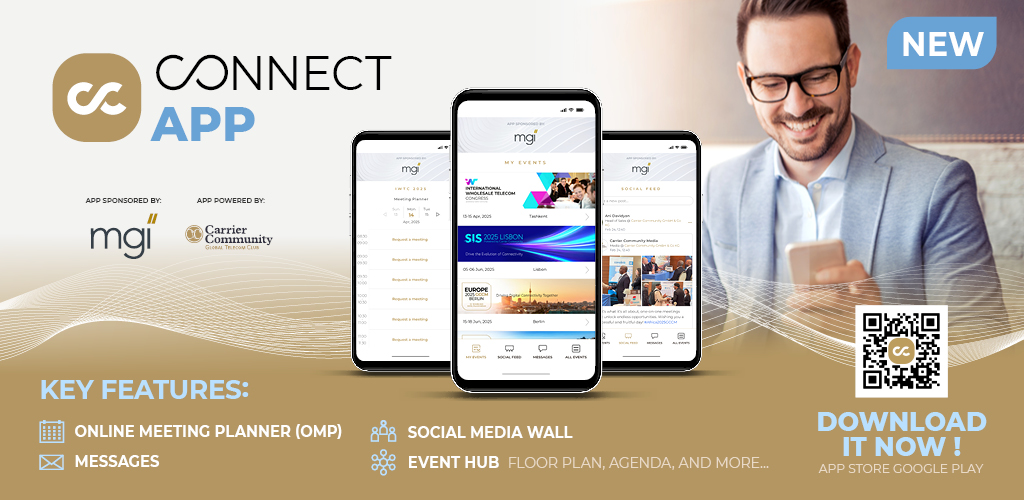 Now that we have provided a solid background into the early development of blockchain in our first article entitled And in the beginning there was Bitcoin, we will now dig deeper into the meat of the subject and into how blockchain could revolutionize processes and even players in the international telecom world. But, we need a touch of realism before we start…
Now that we have provided a solid background into the early development of blockchain in our first article entitled And in the beginning there was Bitcoin, we will now dig deeper into the meat of the subject and into how blockchain could revolutionize processes and even players in the international telecom world. But, we need a touch of realism before we start…
A LONG TERM BUSINESS TRANSFORMATION
A recent article in the Harvard Business Review outlined the authors’ view that blockchain is far more than a disruptive technology that will only allow some upcoming companies to provide an existing service at lower cost and displace the incumbents. Instead, it is more akin to the early development of TCP/IP, the underlying protocol for the internet and all the cloud based services we see around us. TCP/IP started very slowly, initially with private e-mails morphing into public e-mail systems then into the web based and ultimately cloud based solutions that enable almost all commerce and innovations today. But this didn’t happen overnight, far from it. It was a decades long process, and blockchain could be the same. A new technology underpinning services and capabilities such as this will require 10 or 20 years to reach its full potential. So, with that in mind, let us turn to how it could impact wholesale telecom in the years to come. The TCP/IP analogy is a good one for our industry, as it brings to mind all the issues of early attempts to dislodge circuit-switched networking in favor of IP solutions – a process that it still going on today, 20 years after it started. The IP-TDM migration took many years to pick-up as there were many things that didn’t quite work initially: quality was poor, standards were nonexistent, certain features (fax, anyone?) didn’t work and so there were endless reasons to stay with the status quo. In fact, circuit switching is far from dead even now. From our point of view, the same slow start will also take place with blockchain. Many challenges will have to be addressed before its full potential can be harvested by operators and carriers: standards, processes, systems and the list goes on. Our objective here is therefore not to present hard solutions where every component has been analyzed and issues resolved – it would be a short article indeed if that was our intent. Rather, we want to put forward potential use cases that we think could be transformed over the years by blockchain based solutions. Our objective is to get people thinking of what it could mean for their business at the earliest stage of this revolution. Some of these use cases may just improve efficiency, while others may decimate the current business structures. Nevertheless, all of them should be food for thought for anyone in the industry today, as blockchain could become a major game changer for operators looking to reinvent themselves and remain relevant.
UNLOCKING WHOLESALE AUTOMATION
Blockchain at its heart is a new approach to sharing information in a secure fashion, and in a way that guarantees the historical accuracy of that information. Once it is there, it is immutable. Around the edges, applications and capabilities can then automate processes making use of the data, with smart contracts that will issue payments in real-time when agreed and defined criteria are met with no human involvement. Naturally, the first use cases that come to mind as an initial adoption of blockchain in the wholesale industry are probably the ones tackling the automation of the processes around rating and settlement. We will therefore start with an analysis of how that could evolve and how it could benefit wholesalers in the long run. The current wholesale reality The commercial interworking of the voice wholesale business is defined by a series of documents shared and exchanged between carriers at different stages of the process. To date, most of this is achieved manually, often using excel spreadsheets with designs and processes that differ from one carrier to another.
As a result, this is inefficient, prone to human errors and costly. Although commercial solutions exist to normalize this information, little global standardization has taken place when it comes to the format of the information shared and the processes followed. A pretty sad state of affairs considering our industry is at the center of our society’s digital transformation….So, before we look at how blockchain could help wholesalers revolutionize their interworking, let’s define the current wholesale chain through 4 key steps: pricing, routing, billing and settlement. See diagram below. In summary, the process is complex, open to errors (either mistakes in the excel spreadsheets or changes missed by the customer), which result in a higher bill than expected, and the timeframe from exchanging rate sheets to a fully paid invoice can take weeks or occasionally months. The possible future blockchain wholesale reality We could envisage that the current lengthy and manual wholesale interworking process will be replaced by a real-time secured and automated blockchain-based process. In this scenario, the rate sheet would be written into the blockchain, with secure access granted to the contracted customer. As we know, these are intended to be valid and unchangeable until they are changed in the future with a new operative timestamp. Actual minute volumes to each destination defined in the rate sheet could similarly be written into blocks. A “smart contract” would calculate, in realtime, the amount owed for minutes terminated and could balance flows in each direction, if necessary, to generate an amount due from one party to the other.
CURRENT MANUAL WHOLESALE INTERWORKING PROCESS
The process around rating and settlement starts with the exchange of formal rate sheets – the price for termination to be applied from a defined start date and time. As we have mentioned, these are often in Excel spreadsheets and define the per minute price, for destinations around the world as defined by the dialing codes assigned to those destinations. Carriers use an amalgam of all the offered termination prices with their dialing codes to develop a routing plan that aims to obtain the best quality at the lowest price. This may take advantage of small differences in dial code plans between suppliers to maximize the margin. Each call is recorded with the digits dialed and conversational duration, and every minute of conversational traffic can then be priced using the agreed rate. These cumulative amounts, small in themselves but large in the aggregate, are then combined into an invoice and sent to the customer for payment. Following a validation process of checking volumes and rates, the invoice is finally paid in the appropriate currency. As we know, this prolonged process can be subject to various frauds – deliberate attempts to send high value traffic with no intent to pay, through to just poor business management with no cash to pay the invoice when due. It may also be significantly extended by disputes between the operators around the number of calls or their duration.
At an agreed time, the payment could be automatically triggered (using either a fiat currency or a new telecom token, much as SDRs were used in the old bilateral days). With this approach, there is clarity and agreement on the agreed rates, on the amounts owed and rapid and automated near real-time settlement, potentially without currency risk. This could significantly improve the efficiency and the cost of the process and equally significantly reduce the risk of bad debt and non-payment. Are there issues to be resolved – absolutely!
Common formats and standards, common agreement on destination codes, common processes, validation of the “minutes” – all need to be resolved. Nevertheless, the opportunity could be significant for the group, vendor or consortium that comes up with a solution.
To achieve this, a federated blockchain would need to be created with the aim of enabling this blockchain-wholesale interworking process securely and privately. A private environment removes the need to establish a payment mechanism for the “miners” validating and writing the blocks of data as only trusted parties that are part of the wholesale federation would be involved in the blockchain ecosystem. This would also enable the transactions to be completed as close to real-time as possible and at the lowest cost.
BLOCKCHAIN + AI THE PERFECT FRAUD PREVENTION RECIPE?
Fraud continues to plague the telecom industry, so could blockchain play a role there? Again, with some uncertainties to be resolved, yes. The fraud management vendors, and some carriers, are making great strides with the development of artificial intelligence (AI) based solutions that continually learn from the patterns of international calls to detect the “fingerprint” that represents the start of a fraud. Perhaps the fraud follows a pattern of test calls from a hacked PBX to a distant international premium rate number that is testing the access via various wholesale carriers? Each company can analyze its own statistics to help train such solutions, but what if all this data was written securely and confidentially into a blockchain with access provided to trusted developers to train AI systems with massive volumes of bulk data? That would be very powerful! Many self-learning AI systems rely on such volumes to separate the wheat from the chaff and a combined effort by the industry using blockchain could speed the development of accurate and completely trust-worthy algorithms to kill fraud before it begins.
THE BEGINNING OF THE END?
One major question remains, could blockchain actually mean the end of wholesalers, making them obsolete as a trusted middle-men between retail operators, in a similar fashion to banks being made redundant in money transfers? Definitely food for thought. So watch this space, as our future articles will tackle these existential wholesale-blockchain subjects.


